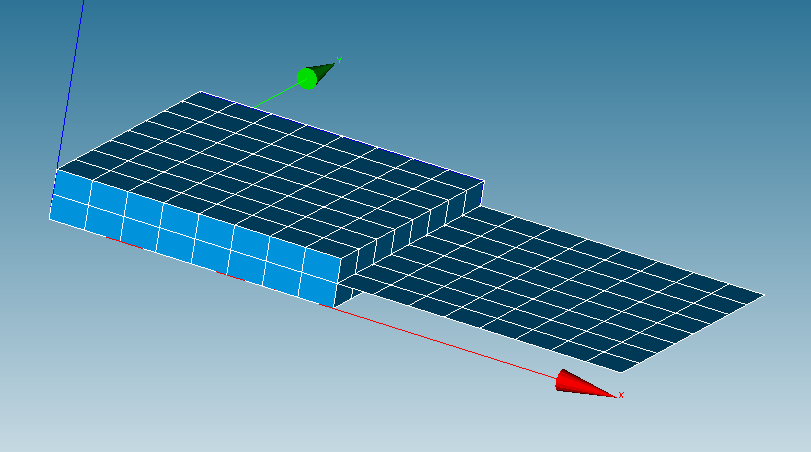8. H modeling#
8.1. But#
The purpose of this test is to validate the use of load LIAISON_MAIL.
8.2. Description#

On the mesh represented by the figure above, the 3D part (modeled by 3D elements) and the surface part (modeled by Q4GG elements) are connected with kinematic links using LIAISON_MAIL/COQUE_MASSIF of the operator AFFE_CHAR_MECA. The faces of the 3D elements in \(x=0\) are blocked and a force is imposed on a node located at the opposite end.
The calculation is done with STAT_NON_LINE. This provides an initial state for CALC_EUROPLEXUS. We do not impose on CALC_EUROPLEXUS any loads other than those that created the initial state.
8.3. Principle of validation#
Comparison with the initial state: it is considered that the load of type LIAISON_MAIL is considered to be well translated to EPX if the system remains in equilibrium, i.e. in the initial state provided.
8.4. Tested values#
Results from STAT_NON_LINE :
Node |
Component |
Reference Type |
Reference Value |
Tolerance |
FLECHE |
|
“NON_REGRESSION” |
“” |
|
FLECHE |
|
“NON_REGRESSION” |
“” |
|
FLECHE |
|
“NON_REGRESSION” |
“” |
Results from CALC_EUROPLEXUS :
Node |
Component |
Reference Type |
Reference Value |
Tolerance |
|
FLECHE |
|
“AUTRE_ASTER” |
“” |
2.76027428973E-05 |
1E-3 |
FLECHE |
|
“AUTRE_ASTER” |
“” |
0.000201817506448 |
1E-3 |
FLECHE |
|
“AUTRE_ASTER” |
“” |
0.00525919072834 |
1E-3 |